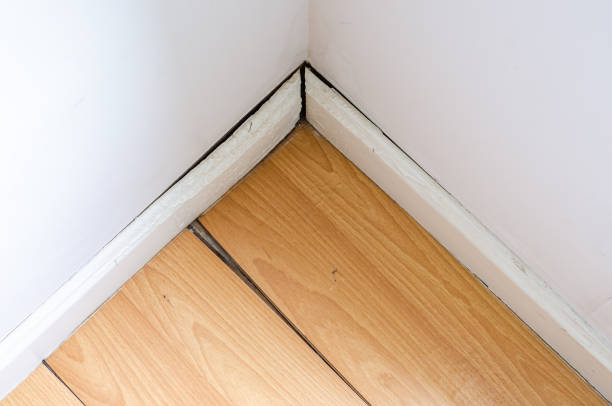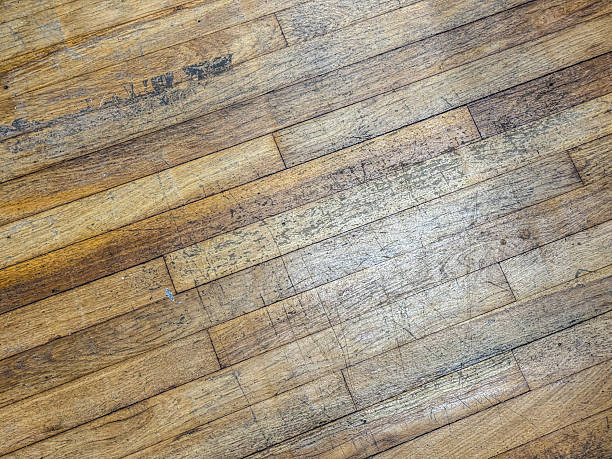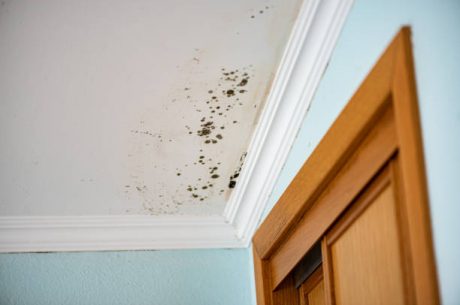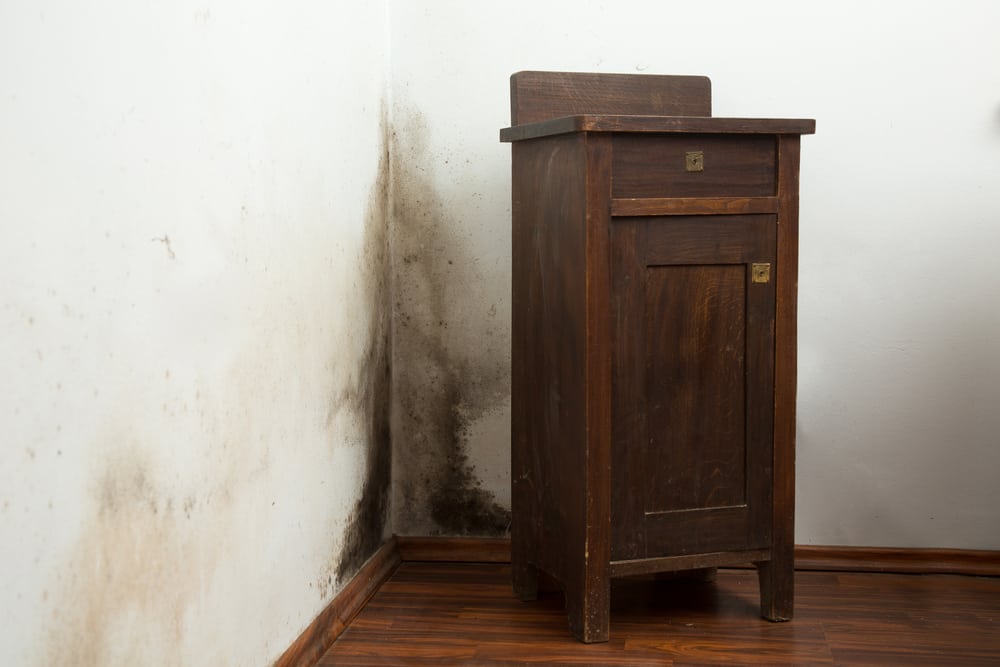Table of Contents
Hardwood floors are a symbol of warmth, beauty, and home value—but when water sneaks in, they can quickly become a breeding ground for mold and structural problems. From minor bubbling to full-blown buckling, these issues can signal something far more serious underneath.
Let’s dive into the top signs of mold under hardwood floors, what they really mean, and how to deal with them before they spiral into major (and expensive) repairs.
Why Moisture Under Hardwood Floors Is a Big Deal
Florida’s subtropical climate—especially in coastal towns like Santa Rosa Beach—creates the perfect environment for moisture retention. Whether it’s high humidity, storm flooding, or plumbing issues, moisture can easily seep under your hardwood flooring and remain trapped.
This trapped moisture invites mold. And once mold takes hold beneath your floors, it quietly spreads until it surfaces as warped wood, strange odors, and even health symptoms.
That’s why it’s critical to recognize the top signs of mold under hardwood floors early—so you can act fast and avoid long-term damage.
Top Signs of Mold Under Hardwood Floors
1. Persistent Musty Odor
You walk into your home, and there it is—a stale, damp smell that no amount of air freshener can cover. This is one of the earliest and most consistent signs of mold under hardwood floors.
Musty odors usually mean mold is active and releasing spores into the air. You might not see anything yet, but your nose knows something’s wrong.
2. Buckling or Warping Boards
Hardwood should lie flat. If it’s curling at the edges, lifting from the subfloor, or creating uneven surfaces, that’s not just poor installation—it’s often water damage.
And where there’s water, mold isn’t far behind. Buckling is a visual and tactile red flag that you could be dealing with hidden mold growth.

3. Floorboard Discoloration
If you’re noticing dark patches, gray areas, or unusual stains on your hardwood, don’t ignore them. These may not just be cosmetic issues.
Discoloration is one of the more visible top signs of mold under hardwood floors, especially when mold has begun to surface from underneath.
4. Bubbling or Blistering Finish
A pristine finish doesn’t bubble without reason. If you notice air pockets or blisters in the varnish or sealant of your flooring, it usually means moisture is trapped beneath.
This trapped moisture can feed mold colonies lurking underneath the surface.
5. Increased Allergy Symptoms at Home
If your family suddenly starts sneezing more, coughing, or complaining of headaches and fatigue, it could be indoor air quality that’s to blame.
Mold spores affect respiratory health, especially for children and those with asthma. A spike in allergies could be one of the less obvious—but very serious—top signs of mold under hardwood floors.
6. Dampness Without a Spill
Does the floor ever feel damp even though no one spilled anything? If certain spots feel cool, soft, or wet to the touch, this may point to subfloor moisture—a prime environment for mold.
That hidden moisture allows mold to grow undisturbed beneath your hardwood planks.
7. Loose or Creaking Floorboards
Yes, some creaking is natural in older homes. But if boards start to shift underfoot or sound hollow when tapped, you may be looking at rot or mold decay weakening the structure underneath.
This kind of damage rarely happens without mold playing a role.
How Mold Gets Under Hardwood Floors
Mold doesn’t need much to thrive—just moisture, warmth, and time. Here’s how it often gets under your flooring:
- Plumbing Leaks from sinks, toilets, or washing machines
- Storm or flood water seeping through cracks or improperly sealed edges
- High humidity with poor ventilation
- Condensation from uninsulated subfloors
- Spills left uncleaned, especially near the edges or under rugs
Once mold spores land in these damp environments, they can multiply fast—often before you realize they’re even there.
Why DIY Mold Removal Isn’t Safe
You might be tempted to rip up a few boards and spray bleach. But that could make things worse.
Here’s why mold remediation is a job for pros:
- Bleach doesn’t kill mold in porous surfaces like wood
- Lifting boards incorrectly can release spores into the air
- You risk spreading contamination to other parts of your home
- Moisture mapping and containment require professional tools
For proper treatment, you need trained technicians who understand how to locate, contain, and remove top signs of mold under hardwood floors without compromising your home or health.
How Experts Diagnose Subfloor Mold
Companies like PuroClean of Santa Rosa Beach use advanced equipment to locate and diagnose mold that’s invisible to the eye:
- Moisture meters and infrared cameras to detect hidden dampness
- HEPA vacuums and air scrubbers to capture airborne spores
- Dehumidifiers to dry the subfloor
- Safe removal of affected floorboards and mold colonies
You’ll also get a full report and recommendations on how to restore and prevent future issues.

Preventing Mold Under Hardwood Floors
To protect your investment and your health, prevention is key. Here are expert-recommended tips:
- Use dehumidifiers year-round in humid climates like Florida
- Clean spills immediately—don’t let water sit
- Seal hardwood properly and check for gaps or cracks regularly
- Schedule yearly inspections if your home has a history of leaks
- Ensure good air circulation in basements and crawl spaces
These habits can reduce the likelihood of mold forming and catching you off guard.
FAQs: Top Signs of Mold Under Hardwood Floors
Q1: Can mold grow even if I don’t see water damage?
Yes. Moisture can accumulate silently under boards and support mold growth without obvious signs.
Q2: Are the top signs of mold under hardwood floors always visible?
Not always. Some signs, like odors and allergy symptoms, occur before any visible mold appears.
Q3: How long does it take for mold to grow after water damage?
In as little as 24–48 hours. That’s why prompt action is crucial after leaks or floods.
Q4: Is it expensive to fix mold under floors?
It can be if the problem spreads. Early detection and professional help minimize costs.
Q5: Will I need to replace all my flooring?
Not necessarily. Professionals can often isolate and treat affected areas, depending on severity.
Don’t Let a Small Problem Turn Into a Full-Blown Disaster
If you’re noticing any of the top signs of mold under hardwood floors, now is the time to act—not after it spreads through your home.
Trust PuroClean of Santa Rosa Beach for Mold & Water Damage Restoration
When it comes to mold, seconds matter. PuroClean of Santa Rosa Beach brings years of experience in detecting and restoring water-damaged floors in Florida’s coastal climate.
We’re fast, local, and certified to tackle the toughest mold challenges—so you don’t have to worry.
🔹 24/7 Emergency Service
🔹 Certified Mold Remediation Professionals
🔹 Fast Dry-Out and Dehumidification
🔹 Local, Compassionate Team
📞 Call us today at (850) 399-3380 or visit our website to schedule an inspection.
Don’t wait for bubbling and buckling to turn into full-blown rot. Protect your floors, your home, and your health—starting now.




 PuroClean of Santa Rosa Beach
PuroClean of Santa Rosa Beach